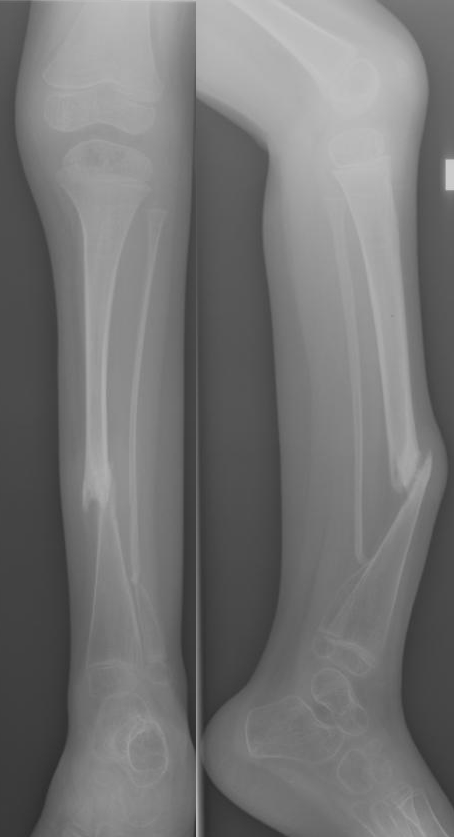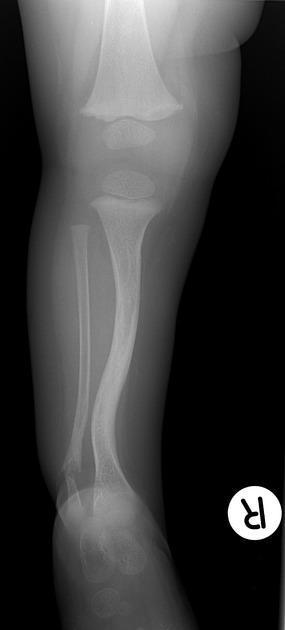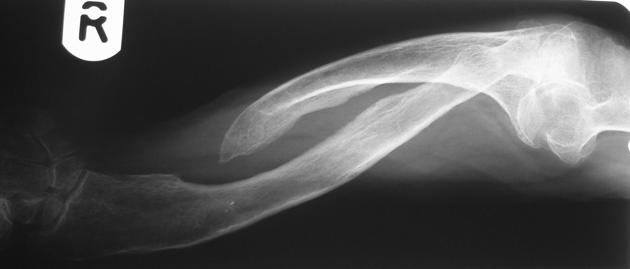Kongenitale Tibiapseudarthrose

Kongenitale
Tibiapseudarthrose Crawford III (zystischer Typ) links mit pathologischer Fraktur


Kongenitale
Tibiapseudarthrose Crawford III (zystischer Typ) links mit pathologischer Fraktur

Congenital
pseudoarthrosis of the tibia • Tibial pseudoarthrosis - neurofibromatosis type 1 - Ganzer Fall bei Radiopaedia

Congenital
pseudoarthrosis of the tibia • Neurofibromatosis type 1 - tibial pseudoarthrosis - Ganzer Fall bei Radiopaedia

Congenital
pseudoarthrosis of the tibia • Neurofibromatosis type 1 - tibial bowing and fibular pseudoarthrosis - Ganzer Fall bei Radiopaedia

Congenital
pseudoarthrosis of the tibia • Ulnar pseudoarthrosis in neurofibromatosis type 1 - Ganzer Fall bei Radiopaedia

Neurofibromatosis
type 1 • Neurofibromatosis type 1 - ulnar pseudoarthrosis - Ganzer Fall bei Radiopaedia
Congenital pseudoarthrosis of the tibia describes abnormal bowing that can progress to a segment of bone loss simulating the appearance of a joint. The condition is usually apparent shortly after birth and is rarely diagnosed after the age of two.
Pathology
The etiology is unclear, however, around 50% of cases are associated with neurofibromatosis type 1 (NF1). Overall, 10% of patients with NF1 are diagnosed with tibial pseudoarthrosis.
Fibular, ulnar, and radial pseudoarthroses can also occur, but much less frequently, and usually only in patients with NF1.
Radiographic features
- progressive bowing (usually anterolateral in the tibia)
- resorption of a short segment of bone
- usually at the site of maximal bowing
- usually between mid and distal one-third of the shaft
- angulation at the site of absent bone segment
- often mimics the appearance of a joint
- cupping of the bone proximal to the absent section
- sharpened narrow appearance of the distal bone
- often fracture or bowing of accompanying bone (fibula with tibia, radius with ulna)
Siehe auch:
- Neurofibromatose Typ 1
- Neurofibromatose
- Tibia recurvata
- kongenitale Pseudarthrose
- kongenitale Ulnapseudarthrose
- Neurofibromatose Typ 1 und Pseudarthrose der Ulna
und weiter:

 Assoziationen und Differentialdiagnosen zu Kongenitale Pseudarthrose der Tibia:
Assoziationen und Differentialdiagnosen zu Kongenitale Pseudarthrose der Tibia:



